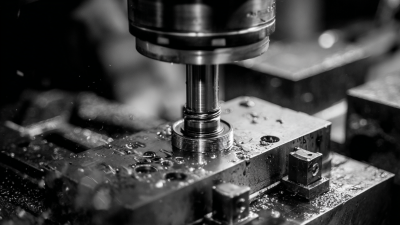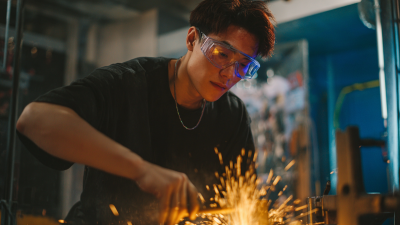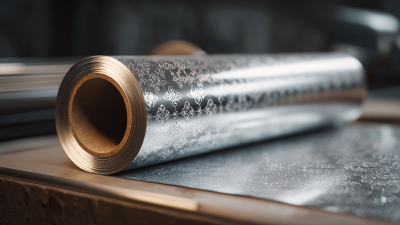Leave Your Message
-
Phone
-
Whatsapp
-
E-mail
Die Cutting is a versatile and innovative technique that has captivated crafters and artists alike, enabling them to create intricate designs and unique projects with ease. This art form involves the use of specialized tools to cut various materials into specific shapes and patterns, making it an invaluable skill in many creative applications. From scrapbooking and card making to fashion design and home decor, die cutting enhances the creative process by offering precision and efficiency. In this exploration of the art of die cutting, we will delve into essential techniques and creative applications that every enthusiast should know. By mastering the fundamentals of die cutting, you can unlock a world of possibilities, allowing your artistic vision to flourish while producing stunning results that will impress both yourself and your audience. Join us as we uncover the secrets to making the most of die cutting in your crafting journey.

Die cutting is an exciting craft technique that allows creators to produce intricate shapes and designs with precision. To get started, understanding the essential tools and materials is crucial. A die-cutting machine serves as the cornerstone of this process, whether it's a manual or electronic version. Paired with custom metal dies, these machines can cut various materials, such as paper, cardstock, fabric, and even thin leather. Having a standard platform for your die-cutting machine is also essential, as it ensures even pressure and consistent results.
In addition to the cutting machines and dies, the choice of materials greatly impacts the outcome of your projects. High-quality cardstock is typically favored for card-making and scrapbooking due to its durability and ease of cutting. For fabric projects, a rotary die and fabric adhesive can enhance your work by allowing precision cuts without fraying edges. Additionally, incorporating embellishments, such as adhesives, markers, and various craft papers, can elevate the creativity of your die-cut designs. By understanding these foundational tools and materials, you can unlock endless creative possibilities within the art of die cutting.
Die cutting is a versatile technique that opens up a world of creative possibilities for crafters and artists alike. Essential to achieving precise and intricate designs, mastering various die cutting techniques is key to enhancing your projects. By understanding the fundamentals of die cutting, including the types of machines available and the materials that work best, you can elevate your craft to new heights.
Tip: Always use high-quality dies and sharp blades to ensure clean cuts. This not only saves you time but also reduces the likelihood of material tearing during the process. Experimenting with different materials such as cardstock, felt, and even metal can yield unique results that add dimension and interest to your work.
Another important technique is layering. By stacking multiple die cuts, you can create depth and visually striking effects. Consider incorporating textures like embossing or mixing colors in your layers to further enhance your designs. Personalizing your projects with die cutting allows for an inventive twist that can transform your ordinary creations into extraordinary pieces.
When delving into the world of die cutting, understanding the various machines available is crucial for both beginners and seasoned crafters. Each type of die cutting machine offers unique advantages and disadvantages. For instance, manual die cutters, like the Sizzix Big Shot, are affordable and portable, making them great for home crafting. However, they require physical strength and may limit the size of the materials you can cut, as they often have smaller platforms.
On the other hand, electronic die cutting machines such as the Cricut Maker or Silhouette Cameo provide more versatility and ease of use. These machines can cut intricate designs and work with a variety of materials, from paper to fabric. The downside, however, is their higher price point and the necessity for a power source. Moreover, users might find a learning curve associated with software and setup. Ultimately, the choice of die cutting machine should align with your crafting needs, budget, and the types of projects you envision.
Die cutting is a versatile technique that has revolutionized the crafting world, enabling creators to produce intricate designs with precision and ease. This method is not just limited to paper crafts; its innovative applications span various mediums such as fabric, wood, and even metal. By using die cutting machines, crafters can create custom shapes for card making, scrapbooking, and home décor, allowing for endless creative possibilities. Whether it’s delicate floral patterns or bold geometric designs, die cutting provides a professional finish that elevates any project.
In addition to traditional paper crafts, die cutting has found its place in mixed media projects, jewelry making, and quilting. Crafters are exploring new ways to incorporate layers and textures, using cut-out designs to create striking visual effects. For instance, in fabric crafts, die cuts can enhance quilt patterns or serve as stencils for appliqué, while in jewelry, they offer unique shapes for pendants and earrings. The blend of functionality and artistry makes die cutting an invaluable tool for both hobbyists and professional artisans, expanding the boundaries of what can be created.
Die cutting can be a rewarding craft, but it often comes with its share of challenges. One common issue is incomplete cuts, which can be frustrating for any crafter. To troubleshoot this, ensure that your die is sharp and the materials are being cut at the correct pressure. Using a thicker cutting mat or adding additional pressure can help achieve cleaner cuts. Additionally, experimenting with different types of paper and die materials can enhance the quality of the final product.
Another prevalent issue is paper tearing during the die cutting process. This can occur due to overly delicate materials or incorrect settings on the die cutting machine. To prevent tearing, choose papers specifically designed for die cutting and avoid those with a high fiber content. It's also essential to run the die through the machine slowly and steadily to ensure even pressure distribution. By addressing these common problems, crafters can enjoy a smoother die cutting experience and achieve beautifully finished projects.






